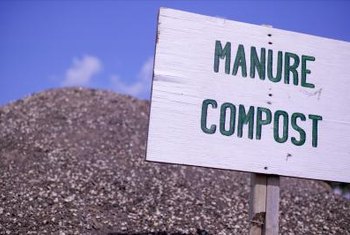UNIT 5. MANURES AND FERTILIZERS
UNIT 5. MANURES AND
FERTILIZERS
Manure: animal waste (estiércol, abono orgánico) /məˈnjʊə/
Yield: amount produced (cosecha)
/jiːld/
Wilt: droop (marchitarse,
languidecer) /wɪlt/
Plant requires food nutrient elements
for its growth and development which are absorbed through soil. The nutrient
supplying sources are manures and fertilizers. Application of manures and
fertilizers to the soil is one of the important factors which help in
increasing the crop yield and to maintain the soil fertility. Potassium,
nitrogen and phosphorous are the 3 major elements
required for the crop growth. Each performs a
different role for the plant, and making a good balance of these elements
available to their plants ensures healthy plants and a good harvest.
Nitrogen
Nitrogen is needed for robust plant growth, speedy development of shoots, healthy flower bud development and a good quality harvest. It is also an essential chemical in the photosynthesis process, by which plants convert sunlight into useable energy. As such, you can tell if your soil is low in nitrogen if plant leaves turn yellowish and brown at the tips.
Nitrogen is needed for robust plant growth, speedy development of shoots, healthy flower bud development and a good quality harvest. It is also an essential chemical in the photosynthesis process, by which plants convert sunlight into useable energy. As such, you can tell if your soil is low in nitrogen if plant leaves turn yellowish and brown at the tips.
Phosphorous
Phosphorus plays a number of important roles in the physical development of a plant. Firstly, it is used by the plant to move energy and nutrients around itself, so that all parts of the plant remain healthy. With nitrogen, it helps in the process of photosynthesis, while it also a crucial component in the formation of nucleic acids, which help form the plant’s DNA, and so helps plants grow strong and develop solid roots. An insufficient supply of phosphorous can cause leaves to wilt or die back, stems and veins on leaves to appear purple, and poor seed and fruit development.
Phosphorus plays a number of important roles in the physical development of a plant. Firstly, it is used by the plant to move energy and nutrients around itself, so that all parts of the plant remain healthy. With nitrogen, it helps in the process of photosynthesis, while it also a crucial component in the formation of nucleic acids, which help form the plant’s DNA, and so helps plants grow strong and develop solid roots. An insufficient supply of phosphorous can cause leaves to wilt or die back, stems and veins on leaves to appear purple, and poor seed and fruit development.
Potassium
Potassium is key to ensuring all the physiological process in a plant function normally. It is an element that helps the plant activate enzymes, form sugars, and synthesize proteins. Good levels of potassium help the plant use moisture efficiently, which helps prevent disease and heat damage, as well as reducing the need for the plant to be irrigated. Too little potassium in the soil will lead to leaves curling and becoming distorted.
Potassium is key to ensuring all the physiological process in a plant function normally. It is an element that helps the plant activate enzymes, form sugars, and synthesize proteins. Good levels of potassium help the plant use moisture efficiently, which helps prevent disease and heat damage, as well as reducing the need for the plant to be irrigated. Too little potassium in the soil will lead to leaves curling and becoming distorted.
Manure: It is a well decomposed refuse from the stable and barn yards
including both animal excreta and straw or other litter. When added to the soil
makes it productive and promotes plant growth.
Fertilizers: These are industrially manufactured chemicals
containing plant nutrients. It is an artificial product containing the plant
nutrients which when added to soil makes it productive and promotes plant
growth.
Difference between Manures and Fertilizers:
Sr No
|
Characteristics
|
Manures
|
Fertilizer
|
1
|
Origin
|
Plant or animal origin
|
Chemical synthesized or manufactured
|
2
|
Nature
|
Organic in nature
|
Inorganic in nature
|
3
|
Type
|
Natural product
|
artificial product
|
4
|
Conc. Of nutrients
|
less concentrated
|
More concentrated
|
5
|
Material
|
Supply organic matter
|
Supply inorganic matter
|
6
|
Nutrient availability
|
slowly available
|
May or may not be
readily available
|
7
|
Nutrients
|
Supply all the primary
nutrients including Micronutrient
|
Supply specific type of
nutrients one, two or three. micro nutrients may or may not be present
|
8
|
Effect on Soil Health
|
Improves physical condition
of soil
|
Do not improve the physical
condition of soil
|
9
|
Effect on plant growth
|
No bad effect when applied in
large quantities.
|
Adverse effect on plant
whenever there is deficiency or excessive application
|
http://www.agriinfo.in/default.aspx?page=topic&superid=1&topicid=356
| HOW TO READ A FERTILIZER LABEL: CLICK HERE |
|||


Comentarios
Publicar un comentario